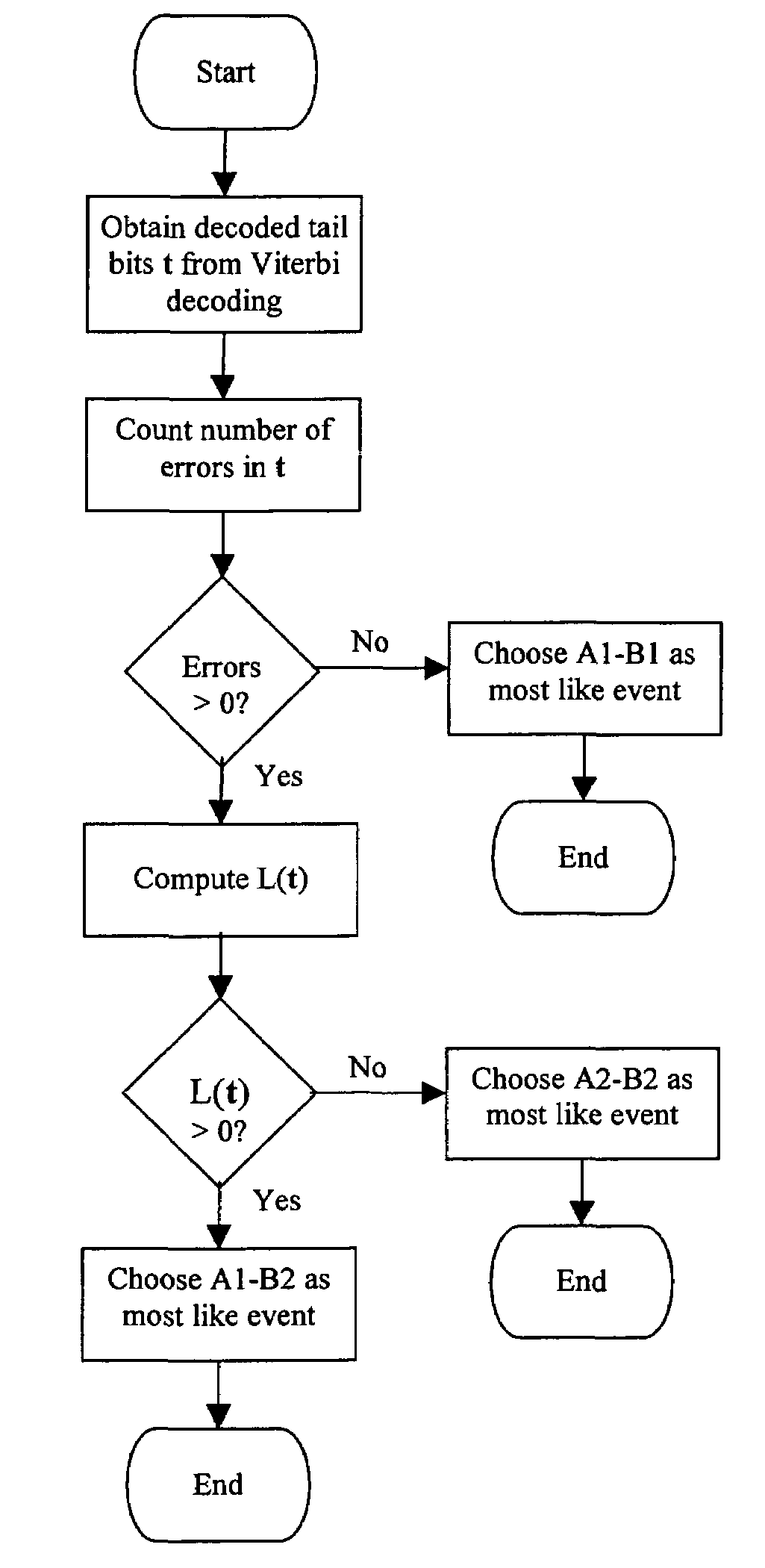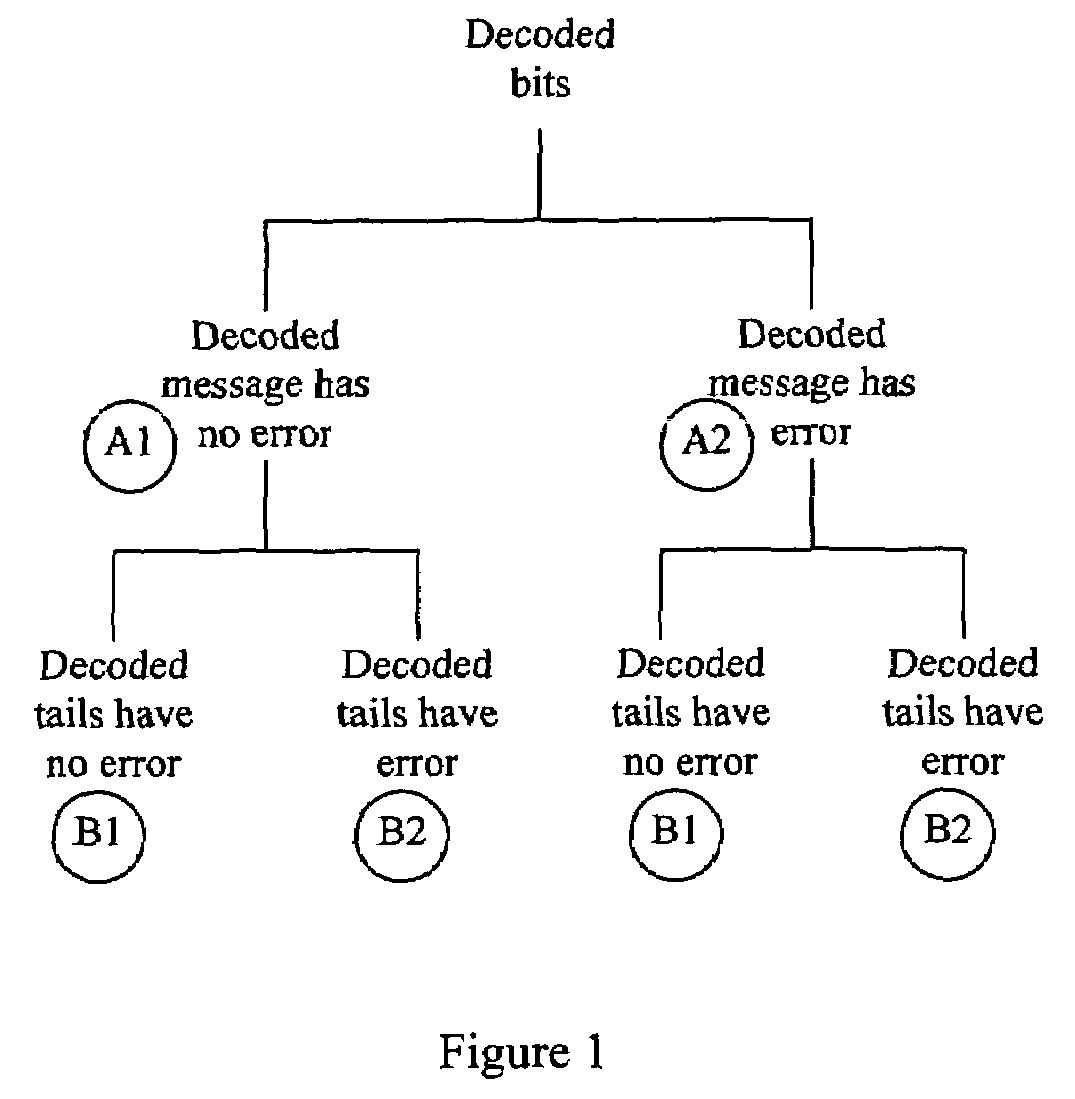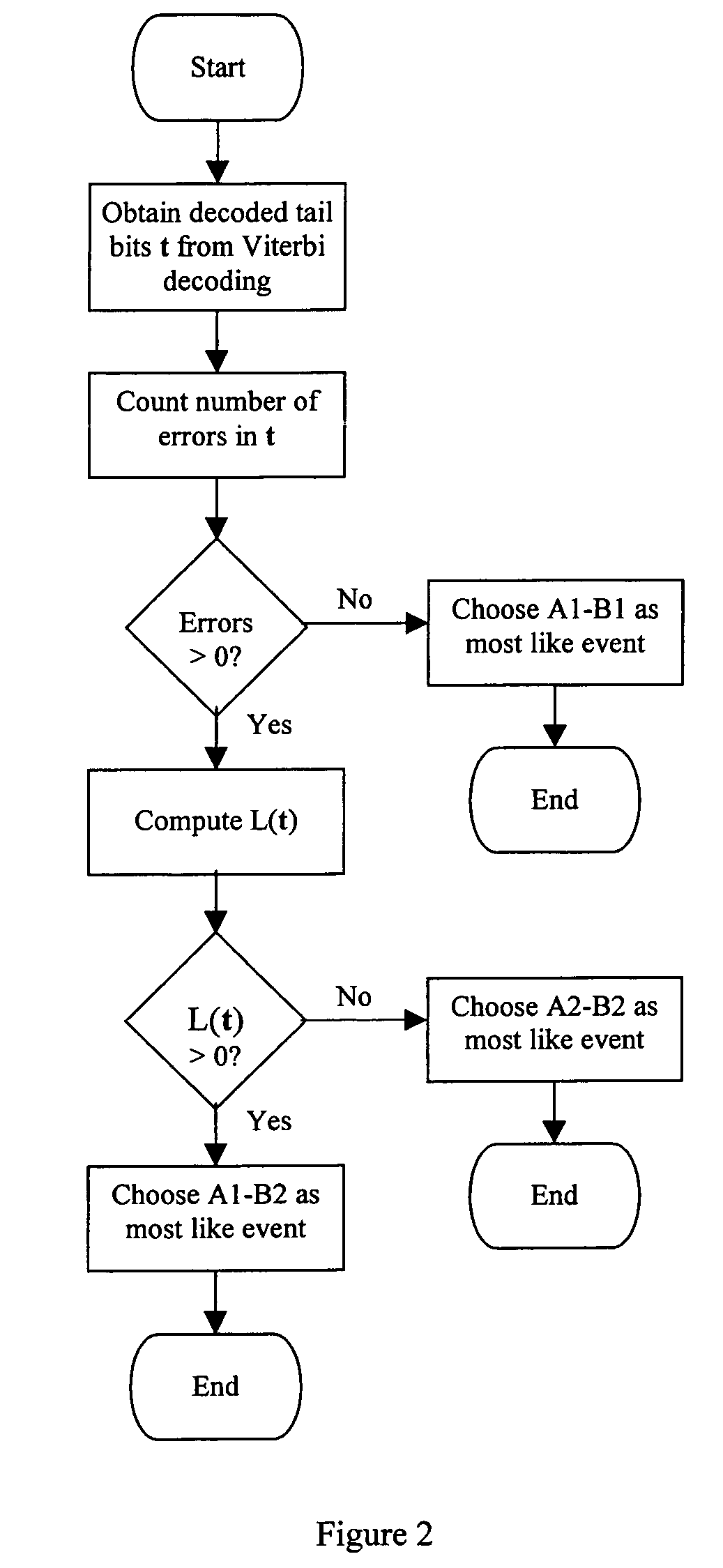Method of estimating reliability of decoded message bits
a message bit and reliability technology, applied in the field of reliability estimation of message bits, can solve the problems of erroneous decoding, tail bits and maybe in the message bits, and the complexity of this algorithm increases linearly with the number of message bits, so as to achieve less computation complexity and high accuracy
- Summary
- Abstract
- Description
- Claims
- Application Information
AI Technical Summary
Benefits of technology
Problems solved by technology
Method used
Image
Examples
first embodiment
[0032]The method of estimating the reliability of the decoded message bit is now explained in accordance with the present invention.
[0033]Certain values need to be calculated beforehand (i.e. not at real time). The reliability of the message bits can be computed using the decoded tail bits output by hard-decision and a table for memorizing the values.
[0034]Here, we define message bits b={b1,b2,b3, . . . ,bN} and tail bits t={t1,t2,t3, . . . ,tT} (with N=message length and T=tail length) as decoded bits with the Viterbi algorithm. Errors, if any, may occur in either message bits b or tail bits t, but since t is not part of the intended message, the decoding is successful if at least b is known to be error free.
[0035]Given the viterbi decoded bits (i.e. both decoded message and tail bits), we can use the decoded tail bits t to try to estimate whether at least one error had occurred in the decoded message bits b. We now define four events to represent the reliability of the message bit...
second embodiment
[0074]In second embodiment of the present invention, the post-decoder memorize all the sets of t's which correspond to L(t)>1. For example, if there are 256 sets of t's, then all of the 256 L(t) values are memorized. Therefore, only the sets of t's, whose corresponding L(t) is larger than 1, are selected and memorized. Using this technique, we can skip the computation of L(t) during real time, and also do not have to memorize P(A1-B2) and P(A2-B2).
third embodiment
[0075]In third embodiment of the present invention, the post-decoder memorizes the sets of t's which correspond to L(t)>C, where C is a constant larger than 1. Using this technique, the memory size is reduced (since there are fewer t's) while the error detection performance can still be maintained at a high level. In summary, the method of estimation reliability of decoded message bits has been disclosed which can reduce the computation complexity while maintaining high accuracy. The scope of the invention is not restricted to the described embodiments. For example, the method of the present invention can be extended to other encoding and decoding algorithms. The definition of the likelihood of tail bits, L(t), can be reversed into the ratio of equation (2) over (1), namely, L(t)=P(event A1-B2|t) / P(event A2-B2|t). Then, the post-decoder determination event A1-B2 is more likely if L(t)<1.
PUM
 Login to View More
Login to View More Abstract
Description
Claims
Application Information
 Login to View More
Login to View More - R&D
- Intellectual Property
- Life Sciences
- Materials
- Tech Scout
- Unparalleled Data Quality
- Higher Quality Content
- 60% Fewer Hallucinations
Browse by: Latest US Patents, China's latest patents, Technical Efficacy Thesaurus, Application Domain, Technology Topic, Popular Technical Reports.
© 2025 PatSnap. All rights reserved.Legal|Privacy policy|Modern Slavery Act Transparency Statement|Sitemap|About US| Contact US: help@patsnap.com



